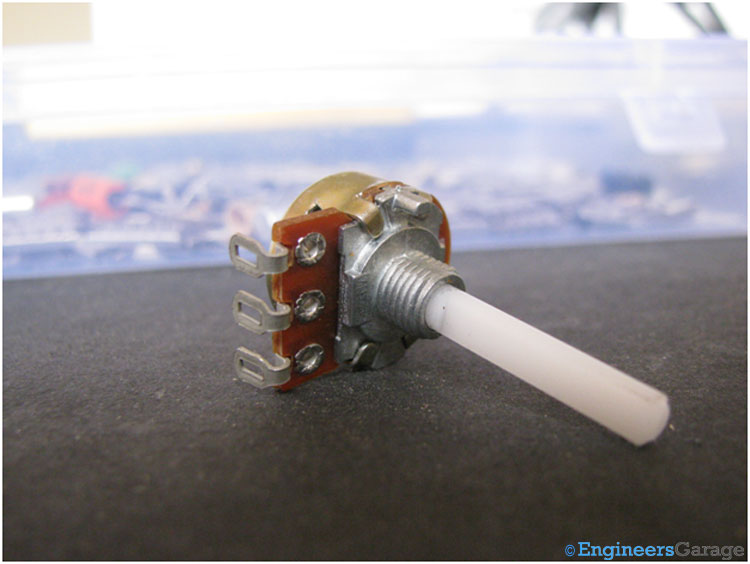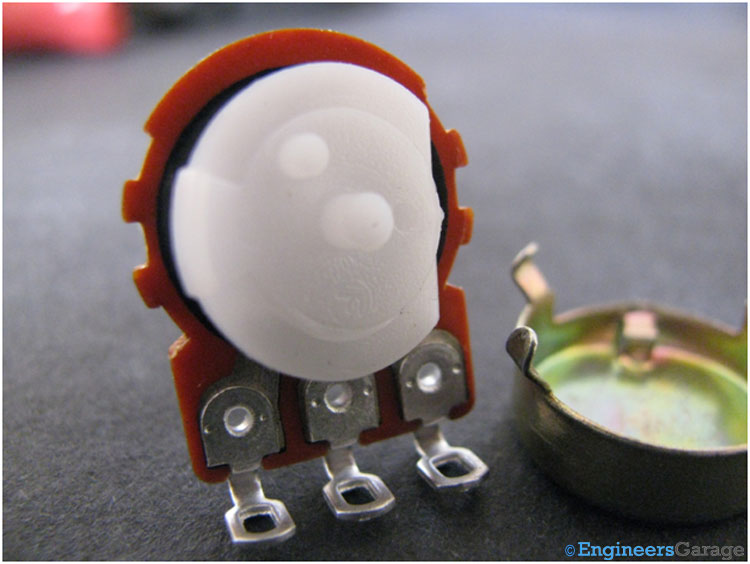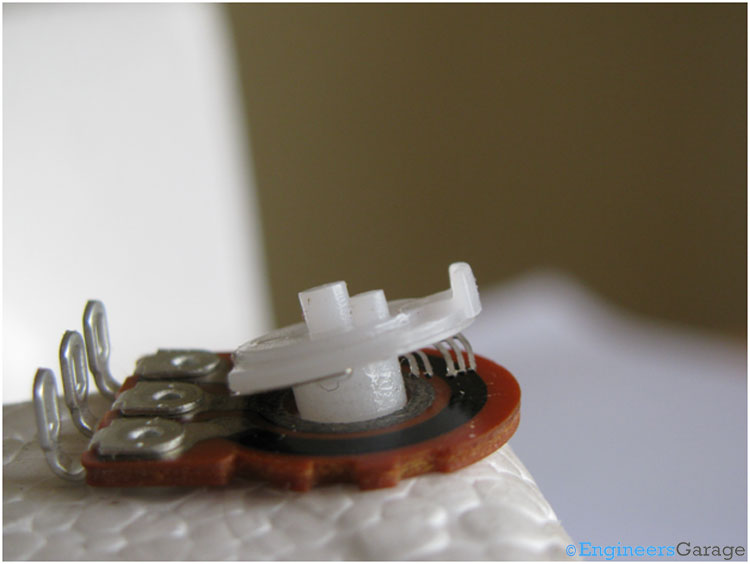Potentiometer also known as pot is generally used in circuits to provide variable resistance or variable voltage. The heart of the potentiometer is a resistive strip inside it through which one can adjust the amount of resistance/voltage to pass in a circuit through it. Potentiometers are commonly used in circuits for various purposes like to control volume in audio circuits, to regulate the speed of the motor in a fan, as light dimmer, etc.
A potentiometer is shown in the images below.

Fig. 1: Image of a Potentiometer

Fig. 2: Three Terminals of a Potentiometer
Terminals
You can see there are three terminals on the potentiometer which are used to connect it to any external circuit.

Fig. 3: Metal Cap of Potentiometer
The metal cap in the above image forms the outer covering and encloses all parts of the potentiometer.

Fig. 4: Metal Bearing for Mechanical Connections
The metal bearing shown in the left side of the above image is used for mechanical connections.
Resistive Strip

Fig. 5: Internal Mechanism of Potentiometer

Fig. 6: Image Showing Concentric Circle of Potentiometer
You can see two concentric circles in the image above. The outer black arc (resistive strip) on the plate is the heart of the potentiometer. It is used to provide variable resistance to the circuit. The inner circle made up of a conductive material is connected to the middle terminal.
Conductive Brushes

Fig. 7: Stainless Steel Brush of Potentiometer
As shown in the figure, the brush, generally made up of stainless steel has two sections of dents. First one with three dents moves on the resistive strip and second one with two dents moves on the inner circle which is connected to the middle terminal (wiper).
The brush is attached to the shaft. It moves on the plate and the resistance applied to the circuit, depends on the position of the brush on the plate.
Variable Resistance Mechanism

Fig. 8: Image Showing the Entire Mechanism of Potentiometer
When we rotate the external shaft, the position of the brush varies accordingly. The resistance applied in a circuit depends on the position of the brush. The brush is designed so as to connect the resistive strip to the middle terminal via inner conductive circular metal plate which in turn is connected to the middle terminal of potentiometer at every instant.
Filed Under: Insight


Questions related to this article?
👉Ask and discuss on Electro-Tech-Online.com and EDAboard.com forums.
Tell Us What You Think!!
You must be logged in to post a comment.